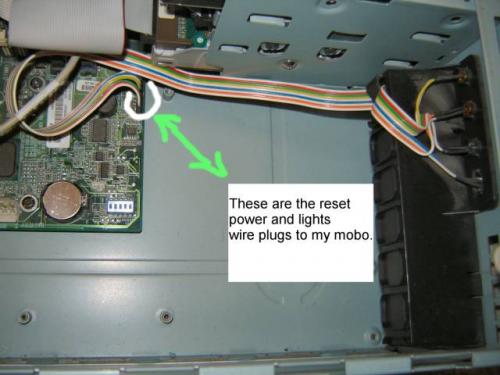Don't panic.
The case you are looking to buy says it supports ATX & micro ATX form factors, so your motherboard will fit in the new case. I know, because I have done it myself. The power supply in your vectra is SFX (not ATX) so this may well prove to be a problem, as I tried to tell you earlier. The new power supply that comes with the case probably won't work with your system because of the lack of a 3 wire PSU fan connector. If the new PSU doesn't work, then you will have to use your original PSU. This will phsyically fit BUT you'll probably find that the screw holes that mount the PSU to the case, don't line up.
Other less important issues are :
You will need to use the back I/O plate from the original case. This is the thin metal plate that surrounds the ports (i.e keyboard/mouse ports, printer port, USB etc) on the rear of the case. This means you need to pop the plate out & swap it with the one in the new case.
Also, as you have already noted, the connectors on the motherboard for the power & reset switches will be different. On the vectra, you have a single connector with lots of wires (see pic below) but on the new case, you will have lots of little connectors with just 2 or 3 wires each (i.e one for each LED or switch). All you need to do is pop the plastic front off the case of the Vectra. Then for each LED or switch, locate the wires coming from it & trace back to the motherboard. Make a note of which pins on the board those 2 or 3 wires connect to. Once you know this, it's simple to hook up the new connectors when you transfer to the new case.
As for the CPU heatsink/fan question...
You're not upgrading the CPU, right? So you may as well just use the heatsink that is currently fitted. As you may no longer the plastic shroud fitted after moving to the new case, then you may want to mount a fan on top of the heatsink to provide additional cooling. Just go for the biggest fan that fits on the heatsink. If your motherboard doesn't have a 3 pin CPU Fan connector on it, then you will need to use a fan that has a 4 pin molex power connectors instead (like the power connector that you plug into a hard drive, for example). The fan will have 2 connectors however, one female (socket) & one male (plug). See the last picture you posted of the heatsinks/fans. All the ones you could see had these molex connectors on.
When you mount the fan on the heatsink, make sure you mount it the right way up, otherwise it will blow air in the wrong direction


















 Sign In
Sign In Create Account
Create Account

